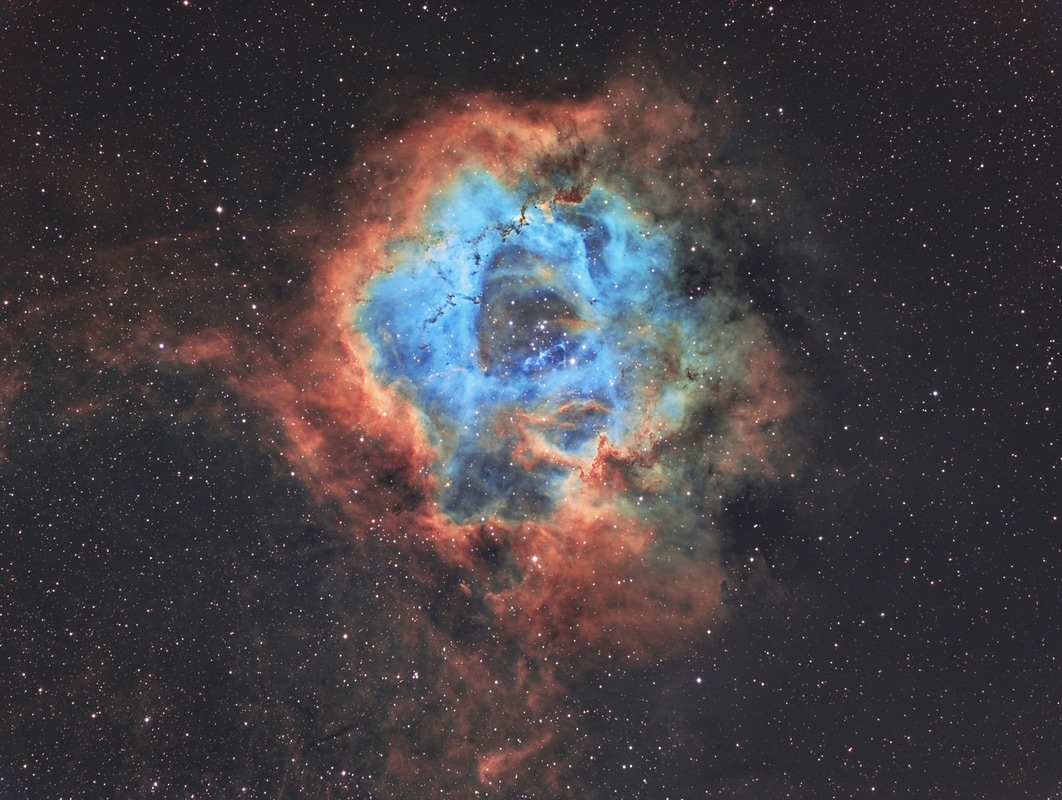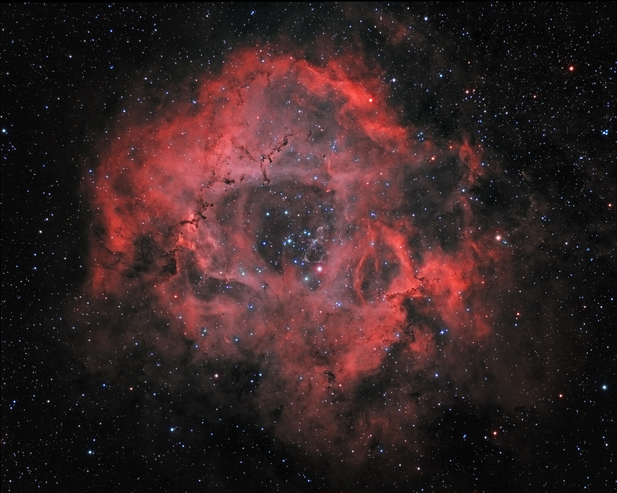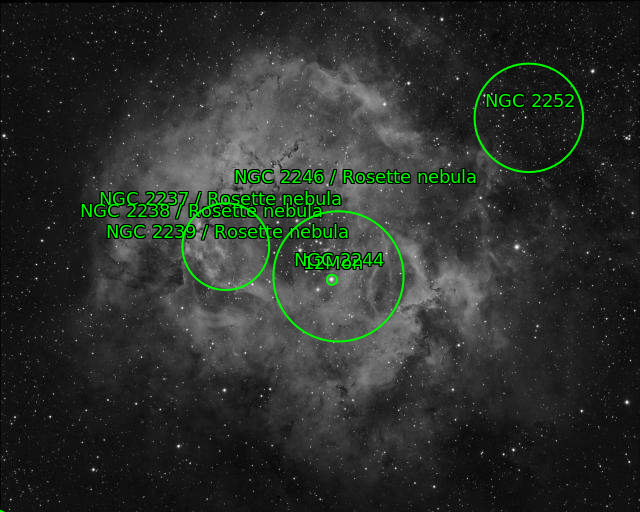NGC2237 - The Rosette nebula
|
This has been taken with the dual Takahashi FSQ85 imaging rig and using the new Eagle S computer from PrimaLuceLab.
Details: M: Mesu 200 T: Tak FSQ85 0.73x C: QSI683 and Moravian G2-8300 with Astrodon 3nm Ha, OIII and SII filters 30x1800s Ha 25x1800s OIII 25x1800s SII Totalling 40 hours total exposure Details
M: Avalon Linear Fast reverse T: Takahashi FSQ85 0.73x C: QSI683 ws-g with Astrodon 3nm Ha and OIII filters 39x900s in Ha 22x900s in OIII totalling 15h 15m of exposure.. Details
M: HEQ5 T: Pentax 75SDHF and 0.7x Optec NexGen reducer C: Atik 460EX mono with Baader 7nm filter 15x1200s Ha 25x300s R + flats and bias 27x300s B + flats and bias Synthesized green channel |
The Rosette Nebula (also known as Caldwell 49) is a large, circular H II region located near one end of a giant molecular cloud in the Monoceros region of the Milky Way Galaxy. The open cluster NGC 2244 (Caldwell 50) is closely associated with the nebulosity, the stars of the cluster having been formed from the nebula's matter.
The cluster and nebula lie at a distance of some 5,000 light-years from Earth and measure roughly 50 light years in diameter. The radiation from the young stars excites the atoms in the nebula, causing them to emit radiation themselves producing the emission nebula we see. The mass of the nebula is estimated to be around 10,000 solar masses. I love this target and so have imaged it in a number of ways, The first image here is a wider field showing more of the finer detail around the target.. |





